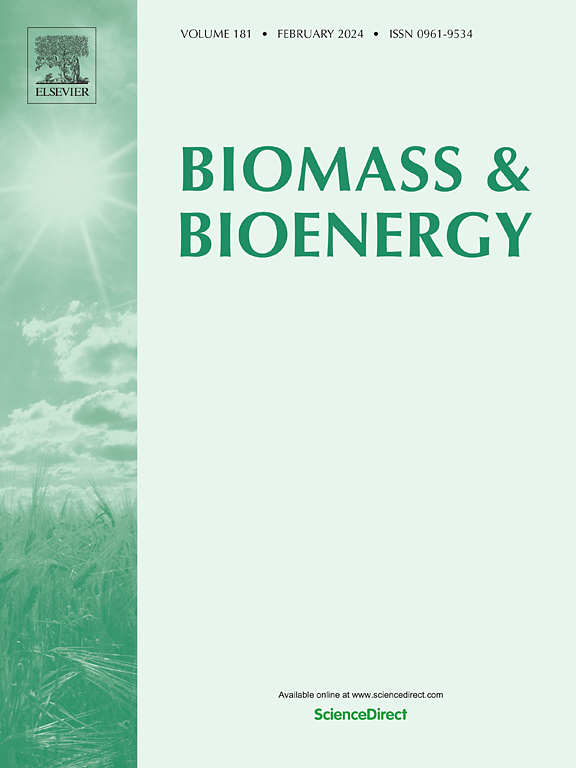Development of multivariable model for predicting heating value of bio-dried refuse-derived fuel from municipal solid waste
IF 5.8
2区 生物学
Q1 AGRICULTURAL ENGINEERING
引用次数: 0
Abstract
Biodrying is a vital waste management method that reduces moisture content and enhances the energy value of refuse-derived fuel (RDF). This study presents a robust model for predicting RDF's final lower heating value (LHV), introducing a novel cross-domain heating value prediction approach. The model achieved optimal performance under aeration rates (AR) of 0.2–0.4 m3/kg/day, coupled with organic content (OC) values between 0.94 and 1.88 m3/kg OC/day, accurately predicting final LHV values ranging from 3500 to 4500 kcal/kg. Results revealed that non-interaction variables and two-variable interactions significantly influenced heat value prediction and biodrying performance, yielding a 76 % coefficient of determination. A biodrying energy conservation index, based on the organic carbon (C) to organic hydrogen (H) ratio, was developed to assess the interplay between AR and final LHV. Results demonstrated an inverse relationship between the organic C-to-H ratio and the final LHV, with C retention and H release (1.48–2.28 %) enhancing energy yield. This study advances the understanding of biodrying by integrating independent variables for predictive modeling and conceptual indices for energy conservation, establishing a foundation for optimizing operational parameters in waste-to-energy systems. The findings provide practical guidance for sustainable waste management and support the production of high-quality RDF for renewable energy applications.

求助全文
约1分钟内获得全文
求助全文
来源期刊

Biomass & Bioenergy
工程技术-能源与燃料
CiteScore
11.50
自引率
3.30%
发文量
258
审稿时长
60 days
期刊介绍:
Biomass & Bioenergy is an international journal publishing original research papers and short communications, review articles and case studies on biological resources, chemical and biological processes, and biomass products for new renewable sources of energy and materials.
The scope of the journal extends to the environmental, management and economic aspects of biomass and bioenergy.
Key areas covered by the journal:
• Biomass: sources, energy crop production processes, genetic improvements, composition. Please note that research on these biomass subjects must be linked directly to bioenergy generation.
• Biological Residues: residues/rests from agricultural production, forestry and plantations (palm, sugar etc), processing industries, and municipal sources (MSW). Papers on the use of biomass residues through innovative processes/technological novelty and/or consideration of feedstock/system sustainability (or unsustainability) are welcomed. However waste treatment processes and pollution control or mitigation which are only tangentially related to bioenergy are not in the scope of the journal, as they are more suited to publications in the environmental arena. Papers that describe conventional waste streams (ie well described in existing literature) that do not empirically address ''new'' added value from the process are not suitable for submission to the journal.
• Bioenergy Processes: fermentations, thermochemical conversions, liquid and gaseous fuels, and petrochemical substitutes
• Bioenergy Utilization: direct combustion, gasification, electricity production, chemical processes, and by-product remediation
• Biomass and the Environment: carbon cycle, the net energy efficiency of bioenergy systems, assessment of sustainability, and biodiversity issues.
 求助内容:
求助内容: 应助结果提醒方式:
应助结果提醒方式:


